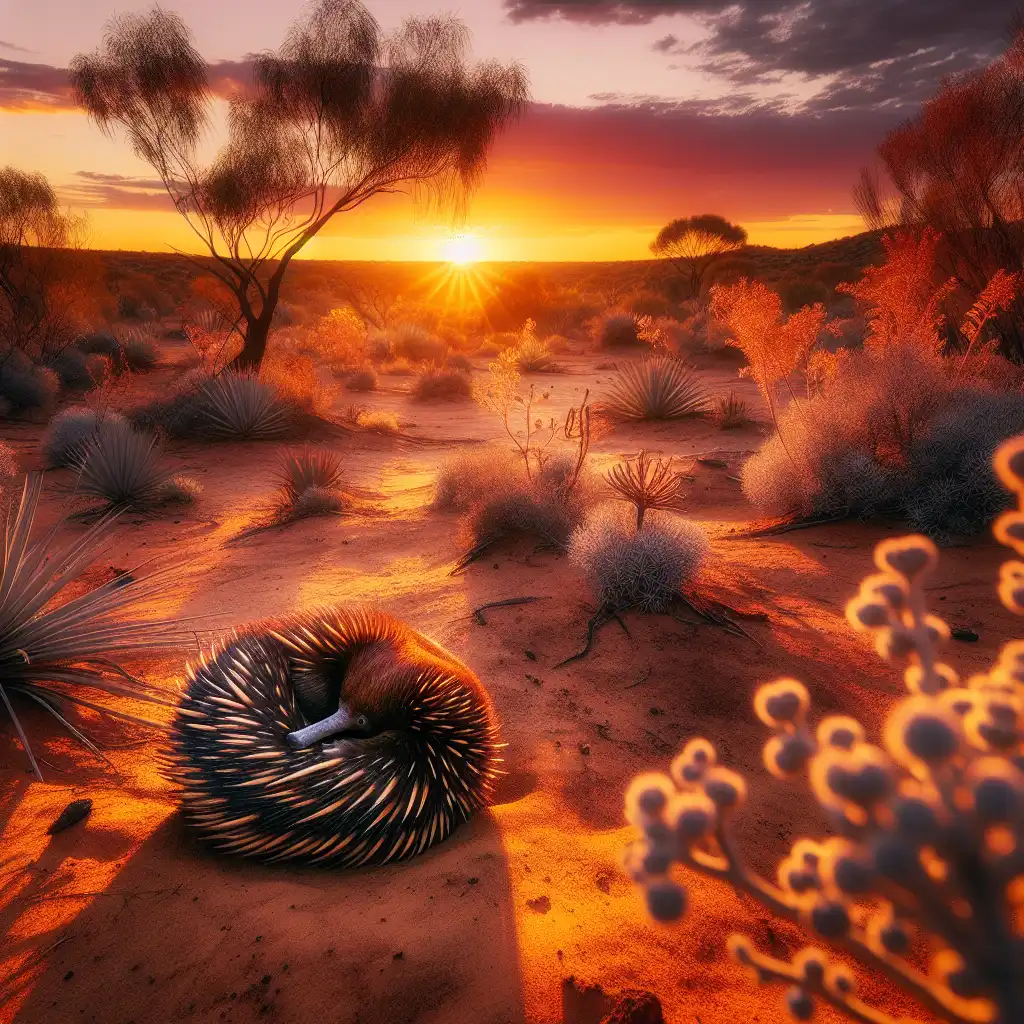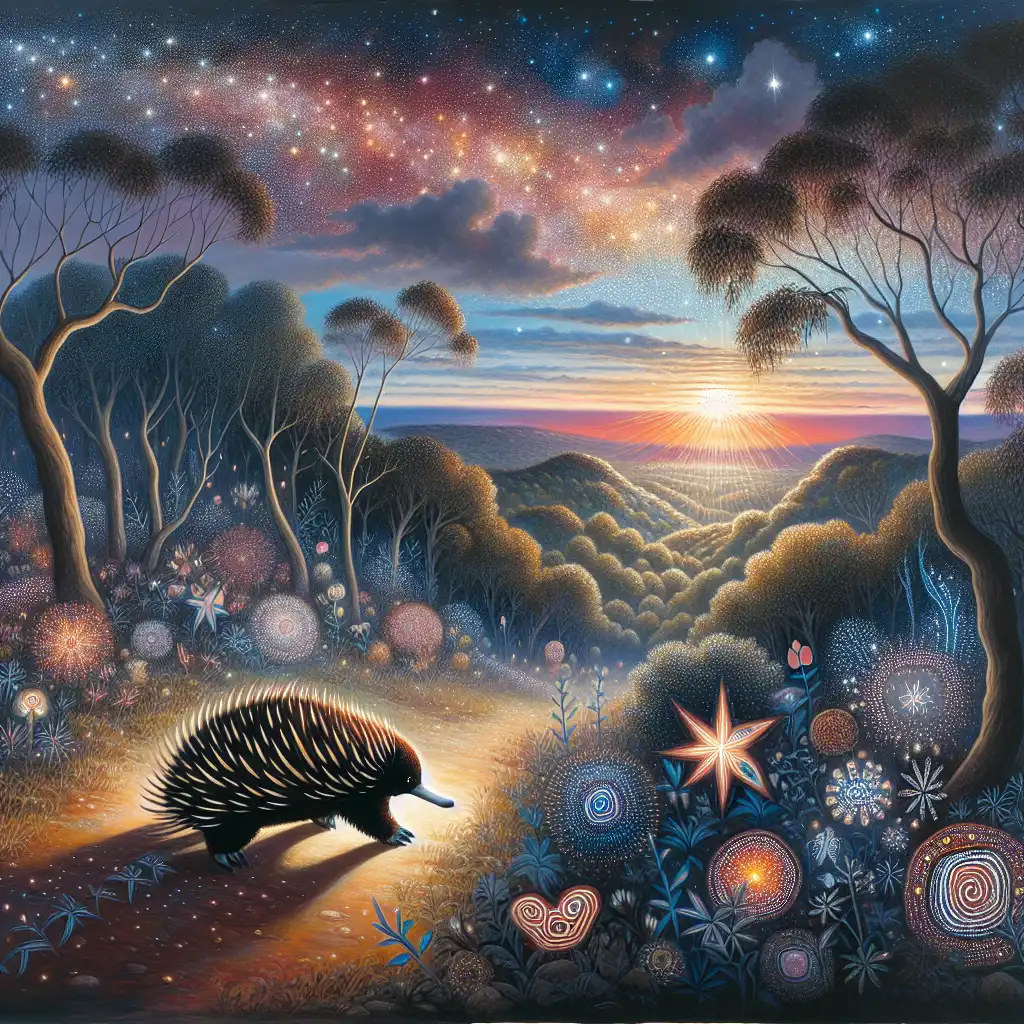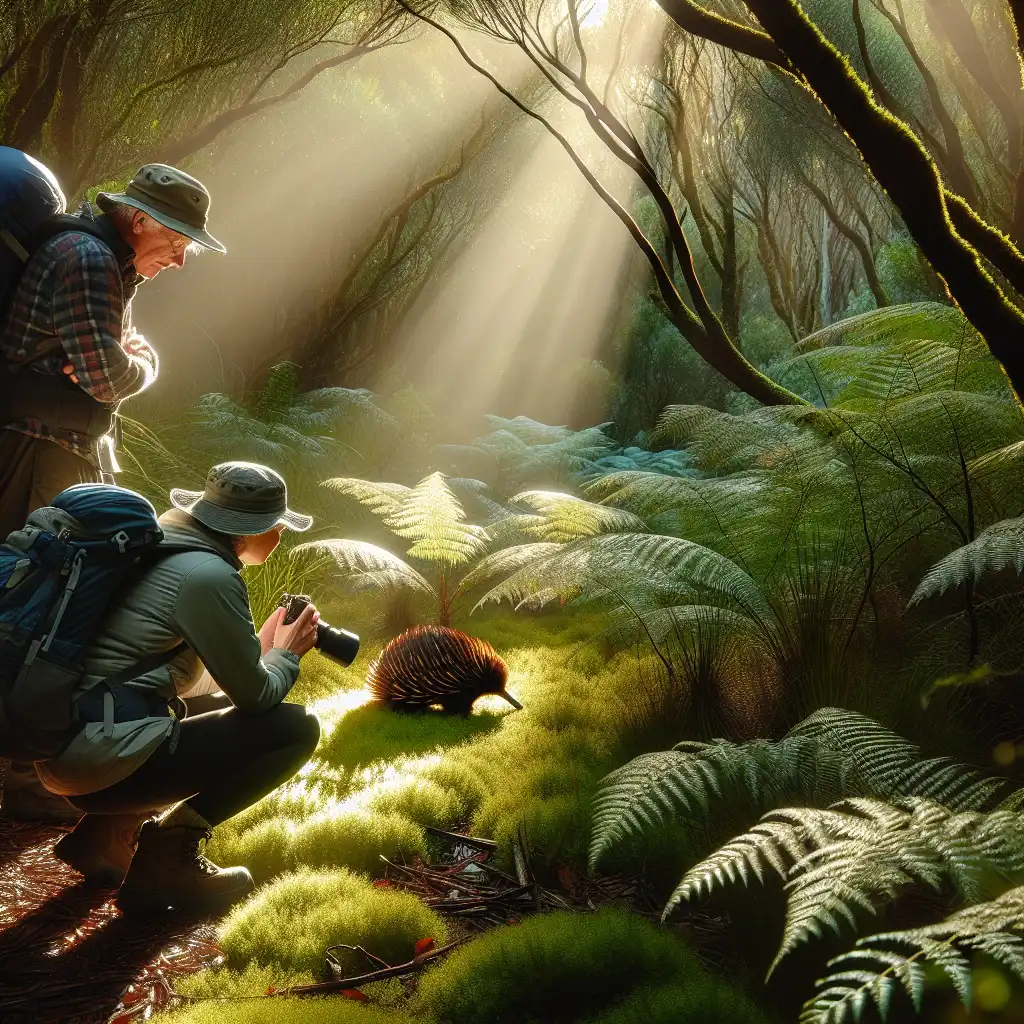
Echidna
Unique Reproduction
Echidnas are monotremes, which means they lay eggs instead of giving birth to live young, unlike most mammals.  Monotremes like the echidna are rare, mostly found in Australia.
Monotremes like the echidna are rare, mostly found in Australia.
Cultural Significance
Echidnas play a role in Indigenous Australian culture and storytelling.  The echidna is often found in Aboriginal dreamtime stories.
The echidna is often found in Aboriginal dreamtime stories.
Natural Habitat
Echidnas are well adapted to a variety of environments from deserts to forests.  We saw an echidna foraging in the forest underbrush during our hike.
We saw an echidna foraging in the forest underbrush during our hike.